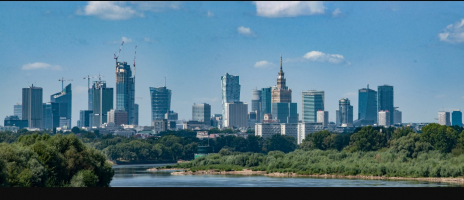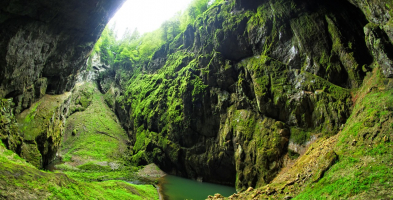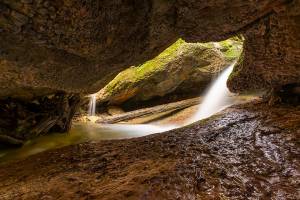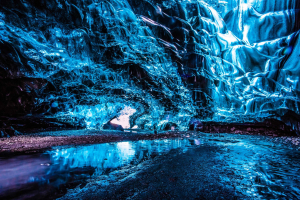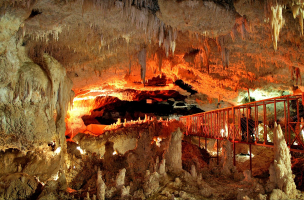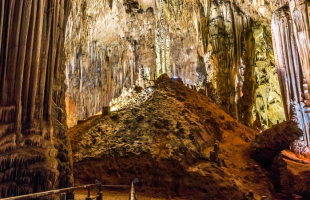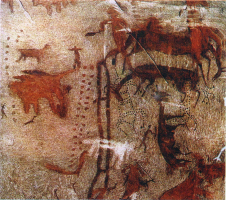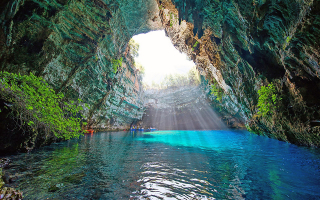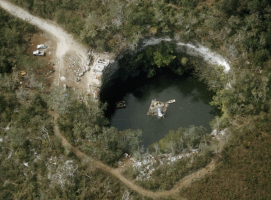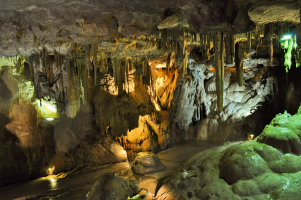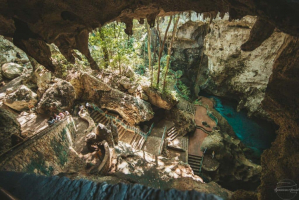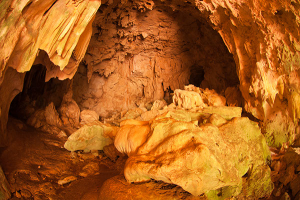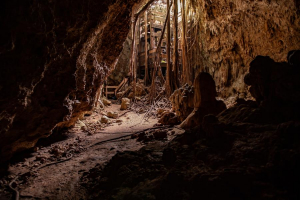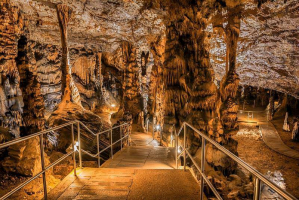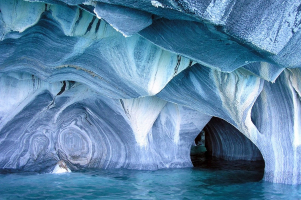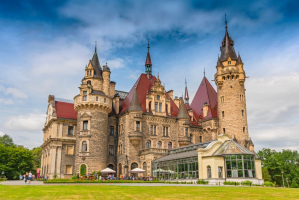Top 7 Biggest Caves In Poland
Caves are unique geological formations found primarily in southern Poland. They frequently have fantastic stone formations that tourists like. Caves have ... read more...fascinated mankind for centuries due to their remarkable natural forms and patterns. Grab your flashlight and head to seven of Poland's most beautiful caverns.
-
The limestone cave system Jaskinia Wielka Śnieżna ("big snowy cave") is located on Mount Małołączniak in the Carpathian Mountains System's Western Tatra Mountains in southern Poland. Tatra National Park has the cave. It is Poland's longest, largest, deepest and biggest cave in Poland, with a length of 23.723 kilometers (14.741 miles) and a vertical range of 824 meters (2,703 feet).
Cavers from Zakopane discovered Jaskinia Śnieżna in 1959. It was explored to a depth of 545 meters (1,788 feet) in 1960, making it the world's fourth-deepest cave at the time. In the years since, the cave has been extensively explored and linked to neighboring caves.
At a depth of 752 meters, exploration in the 1960s came to a halt at a sump or siphon, a U-shaped tunnel filled with water (2,467 ft). For the first time, cavers utilizing scuba diving equipment were able to advance past the sump in 1972. Their expedition went down to a depth of 783 meters (2,569 ft).
Following efforts, the cave was discovered to be 824 m (2,703 ft) deep. The cave is currently being explored, including attempts to connect it to Śnieżna Studnia, Poland's second-largest cave.Length: 23.723 kilometers
Location: the Carpathian Mountains System, southern Poland
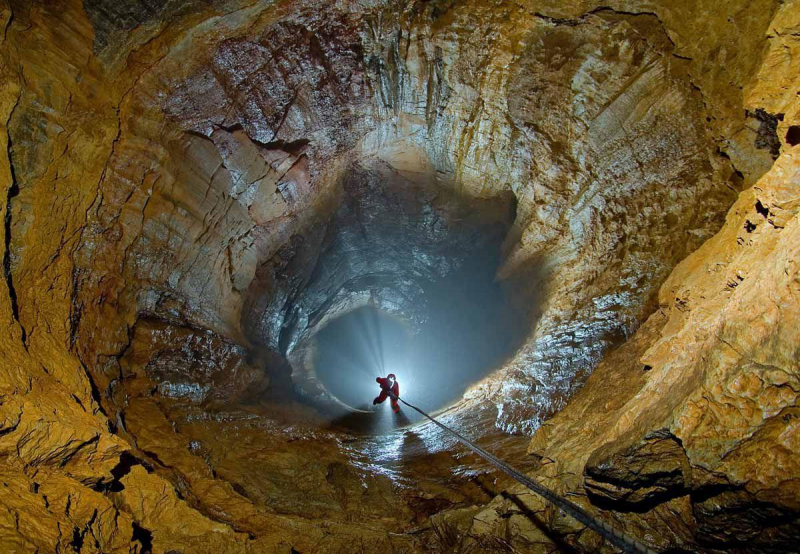
https://en.wikipedia.org/ 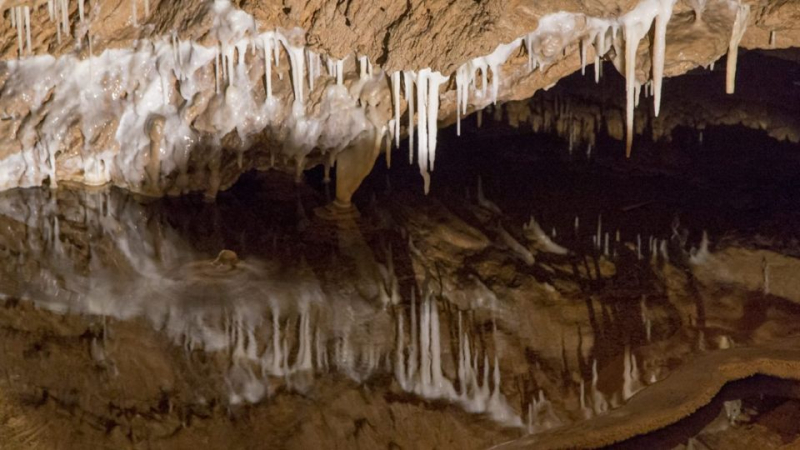
https://tvpworld.com/ -
Malinowska Cave is on the red tourist path that extends from Salmopol Pass to Malinowska Rock, just below Mount Malinów's summit. For the first time, it was described in 1849. The cave has a depth of 22.7 meters and a length of 230 meters. It is of tectonic origin, as are most caves in the Carpathian Mountains, which explains why the rock formations are relatively sharp, the corridors are narrow and high, and there are no rock infiltrations. This is one of the biggest caves in Poland.
According to legend, the cave was used by the Hussites as a hideaway and place of prayer in the 15th century, and then by the protestants in the 16th and 17th centuries. It was claimed to be a secret hiding place of the famed bandit Ondraszek in the seventeenth century, and tradition has it that the cave ran all the way to Zywiec. During his expedition to the Vistula River's sources in 1850, Ludwik Zejszner described the cave for the first time. Bogumił Hoff, Wilhelm Friedberg, Władysław Milat and Kazimierz Kowalski. later investigated the cave.
The cave is now open to visitors. It is located on the right of the tourist path, a few hundred meters below the summit of Mount Malinowa. The cave's entrance is a vertical slot with dimensions of 2.5 x 0.6 meters and a depth of roughly 10 meters, which is protected with a ladder. In the cave, there are two main passages with narrow openings and small chimneys. The first corridor's bottom is covered in rubble and gravel, and it's occasionally muddy, whereas the second corridor's bottom is coated in debris and clay. A Gallery is the largest hall, measuring 13.5 meters long, 1.4 meters broad, and 9.5 meters high. A steady temperature of around + 6 degrees Celsius is normally present, there is a light air movement, and sunlight reaches the bottom of the entrance slot.
The cave is only accessible to advanced tourists due to its challenging entry. It is recommended that you bring a torch and some waterproof clothing. Without professional climbing equipment, access to the cave's lowest level is impossible.Length: 230 m
Location: Silesian Beskids, Poland
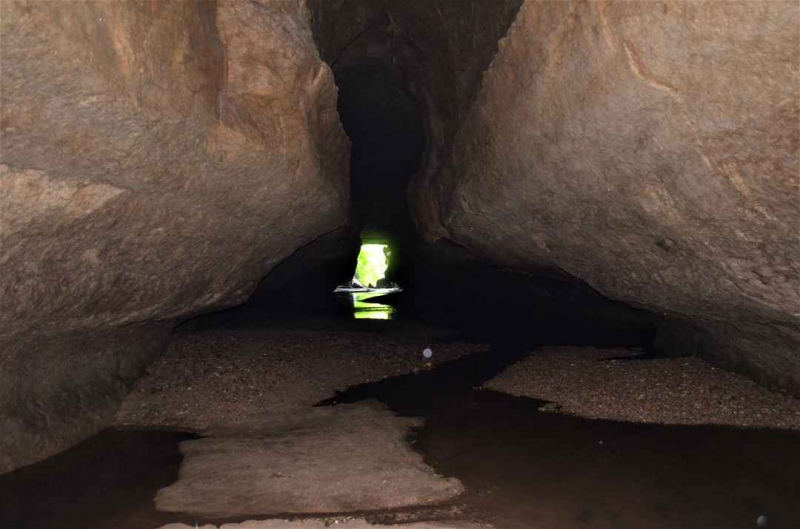
https://www.tripoto.com/ 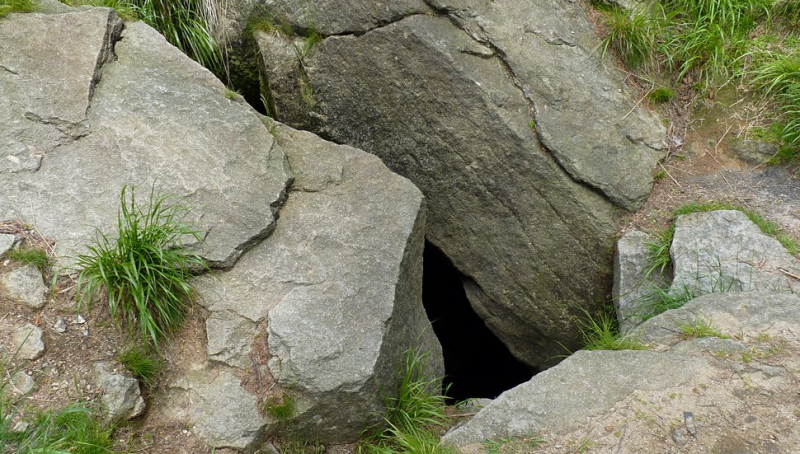
http://www.eng.wisla.pl/ -
Raj Cave, also known as Paradise Cave, is a horizontal karstic limestone cave located inside the Malik hill, south of Kielce in the Witokrzyskie Voivodship of Poland. The cave is 240 meters long (790 feet) and has a vertical range of 9.5 meters (31 feet), however only a stretch of 180 meters (590 feet) and two entrances are exposed to visitors. Its rank as one of the biggest caves in Poland. It is considered one of Poland's most attractive caverns and draws a large number of tourists. Its tunnels lead to five rooms and caverns decorated with speleothems such as stalactites, stalagmites, and columns of calcified rock deposited over thousands of years.
A maximum of fifteen individuals accompanied by a guide are admitted inside the cave every fifteen minutes to maintain an internal temperature of 8 to 10 °C and 95 percent humidity essential to protect the cave's historical value and ecological integrity. The cave's archeological and paleontological discoveries, which include a reproduction of a Neanderthal camp, Mousterian assemblages, and petrified bones of contemporaneous Paleolithic species, are shown in an info center illuminated by optical fiber in front of the entrance.
Józef Kope and Feliks Wawrzeczak, students at a nearby technical school, found the cave in 1963. It was opened to the public in 1972 after intensive research and recording by geologists Tymoteusz Wróblewski and Zbigniew Rubinowski of the Polish Geological Institute's Witokrzyskie department.
The cave's five chambers were formed some 350 million years ago, during the Middle Devonian epoch. There are signs of Neanderthal occupation inside that date back 50 to 60 thousand years. At the site, remains and fossils of cave hyenas and cave bears, as well as innumerable bones of mammalian species such as Woolly rhinoceros and mammoths, were discovered.
Length: 240 m
Address: Dobrzączka, 26-060 Chęciny, Poland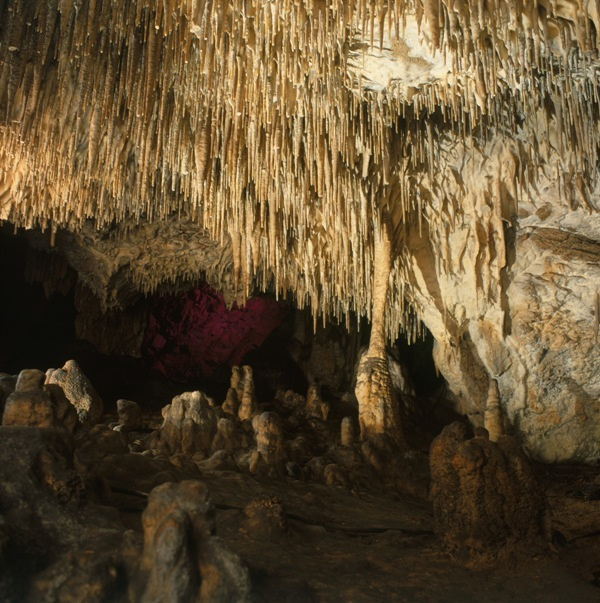
https://swietokrzyskie.travel/ 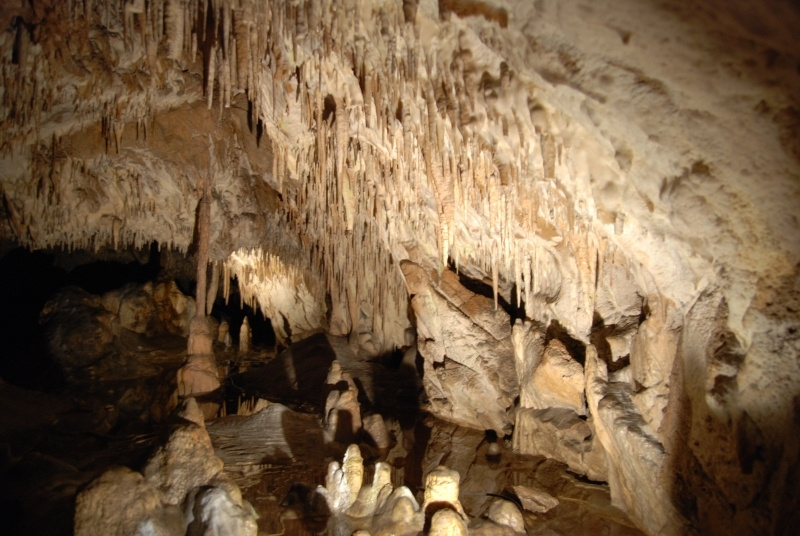
https://swietokrzyskie.travel/ -
The longest cave in the Nienik Mountains, part of the broader Sudeten mountain range, is the Kletno Bear Cave (Polish: Jaskinia Niedwiedzia w Kletnie). It was discovered near the Polish hamlet of Kletno in 1966. It is well-known for its numerous cave bear excavations. Bear Cave is ranked as one of the biggest caves in Poland.
The cave's first 200 meters (660 feet) were discovered in October 1966 while mining in the newly created quarry Kletno III. New passageways were discovered in 1967, including the middle parts of Sale paacowe ("Palace Halls"), and the lowest parts in January 1972. In the years 2014 and 2015, new cave sections were discovered. The cave is currently the longest cave in the Sudetes, with a total length of almost 2 kilometres (1.2 mi).
The cave is located on the right side of the Klenica Valley in the Nienik Mountains, which are a part of the Sudetes. The cave is located at a height of 790 meters above sea level on the Góra Stroma mountain slopes (1,166.8 m).
Inside the cave, abundant bone material from Pleistocene creatures was discovered, especially mammals such as brown bear, cave lion, hyena, wolf, wild boar, and others. Cave bear bones dominated the bone material, accounting for about 90% of all the bones discovered.Length: 2,000 m
Address: Kletno 18, 57-550 Kletno, Poland
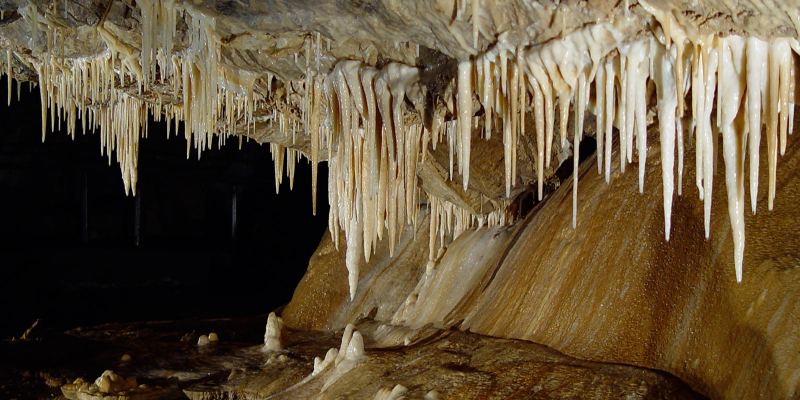
https://jaskinia.pl/ 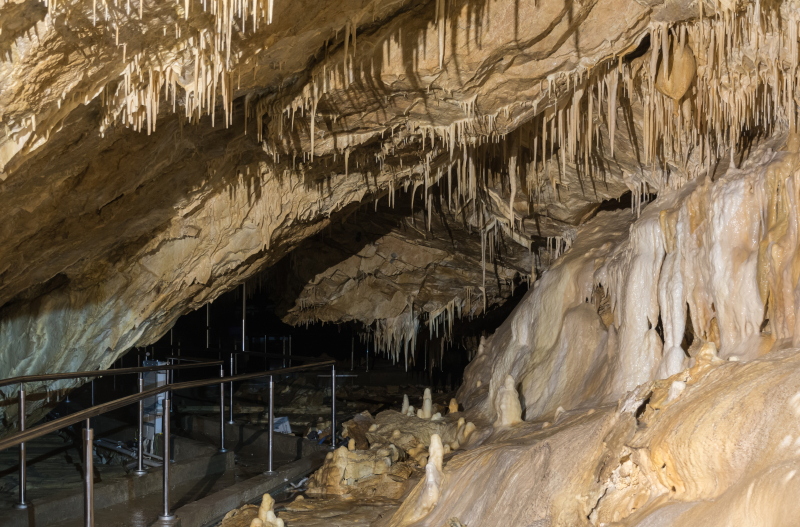
https://en.wikipedia.org/ -
At an altitude of about 1,098 meters above sea level, Jaskinia Mylna (Mylna Cave) is located in Dolina Koscieliska (the Valley Koscieliska). It's one of the most fascinating caves in the Tatra Mountains, and it's open to the public. The whole length of the passageways is 1,080 meters, however only 300 meters are open to tourists. Its rank as one of the biggest caves in Poland. Jan Gwalbert Pawlikowski was the first to explore the cave in 1885. A number of passages and tiers of small chambers make up the cave. Corridors are branching out in a variety of ways. With the exception of lime milk, there are no karst formations.
The cave is located right above the Polana Pisana in the Raptawicka Turnia range. Because there is no artificial lighting in the cave, you must bring your own light source (flashlight or headlamp). In the summer, the cave's temperature stays at 5°C. Because of an artificial opening, some portions of the city have negative temperatures in the winter. Pawlikowski, Pawlikowski, Pawlikowski, Pawlikowski, Pawlikowski.
You can enter the first chamber, Oblazowa Jama (not the nearby Jaskinia Oblazkowa), without lighting. The light comes in through the window rock, which is known as Okno Pawlikowskiego. The summit of Bystra (2248 m) and Blyszcz may be seen via this window (2158 m).
The waves of Koscieliski Potok carved out Mylna Cave (Koscieliski Creek). However, for tourists, several of the hallways and chambers were artificially extended. Chambers are common in situations where hallways intersect. One of the largest side branches leads to Wielka Izba, where there is a surface chimney. Ulica Pawlikowskiego, a very low branch, leads to chamber Chóry. A little stream of water flows through the cave, containing a typical species of blind cave crab, Niphargus tatrensis (pl. Studniczek).
On the main path, you will pass through the white-walled corridor Biala Ulica. After that, there's a traversal protected by chains. Finally, you'll exit through a perforation created intentionally.
Length: 1,080 m
Address: Szlak pieszy czerwony, 34-511 Kościelisko, Poland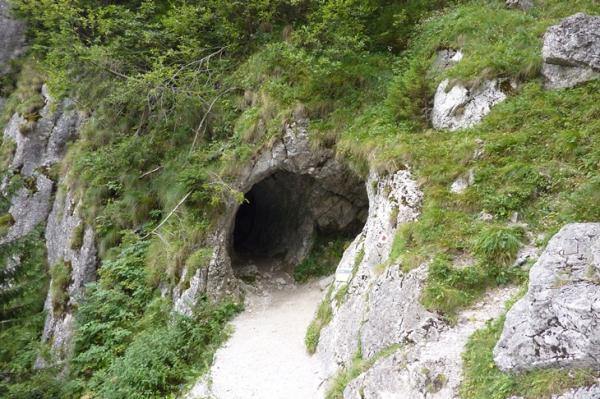
https://www.geocaching.com/ 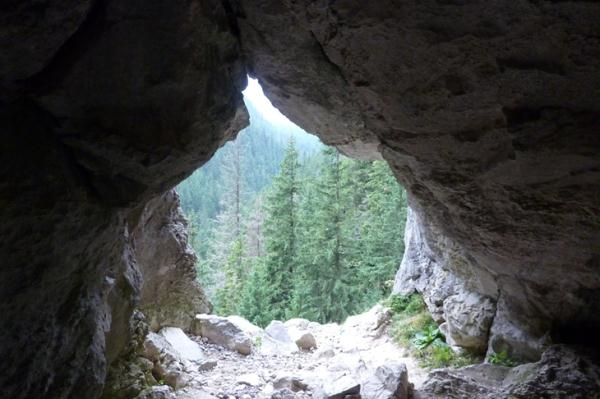
https://www.geocaching.com/ -
King Łokietek Cave, about 125 meters above the bottom of Sąspowska Valley, is the largest of the Park's caves. It has a length of 320 meters and a denivelation of -7 meters. It is made up of multiple corridors and two huge halls: Knight's and Bedroom, as well as two smaller halls, one of which is directly at the start of the Main Corridor and the other, called Kitchen, is placed between the Knight's Room and the Bedroom. The cave's elevation above the bottom of the Prądnik Valley demonstrates that it was carved by groundwater considerably earlier than caves placed below, when the valley's bottom (Prądnik and Sąspowska) was at the level of today's cave entrance. A ticket office is located in front of the entrance, and guests can expect to be greeted by guides. During the V-X in the chair, the cave is open. 9-18 (shorter in the autumn); only with a guide. The cave was first visited using candles in 1987, before being electrically illuminated in 1987.
Water sculpted the cave out of upper Jurassic limestones. Because the cave's roof collapsed before the ice period, the cave's first part is without a roof. The remainder of the tunnel narrows (notice the stairwell), turns south-west, and expands dramatically before entering the Main Corridor. There are so-called vortex boilers in the cave's roof, which were generated when the entire part of the cave was filled with water. On the corridor's walls, toppings and other drip works can be seen, their vivid color often contrasting with the hidden interior.
The Łokietek Cave's stalactite form is poor. Small tubular stalactites (also known as pasta) can be seen on the ceilings of both rooms (most notably the bedroom) and other difficult-to-reach areas. Coatings are used on the walls, and drip ribs or small, thin, wavy draperies are used on the overhanging areas.The temperature inside the cave is kept constant throughout the year at around 7-8 degrees Celsius. Occasionally, just before the entry, "ice stalagmites," also known as peasants, form, typically with extremely beautiful forms.
The Ojcowski National Park's biggest tourist draw is still the Łokietek Cave. It attracts around 120,000 visitors every year, with around 80% of them being primary school students.Length: 320 m
Location: Ojców National Park,Poland
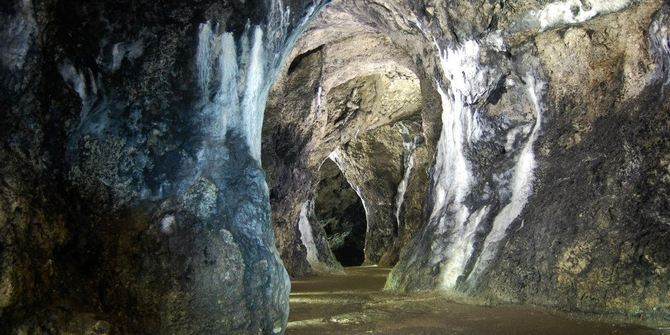
https://www.local-life.com/ 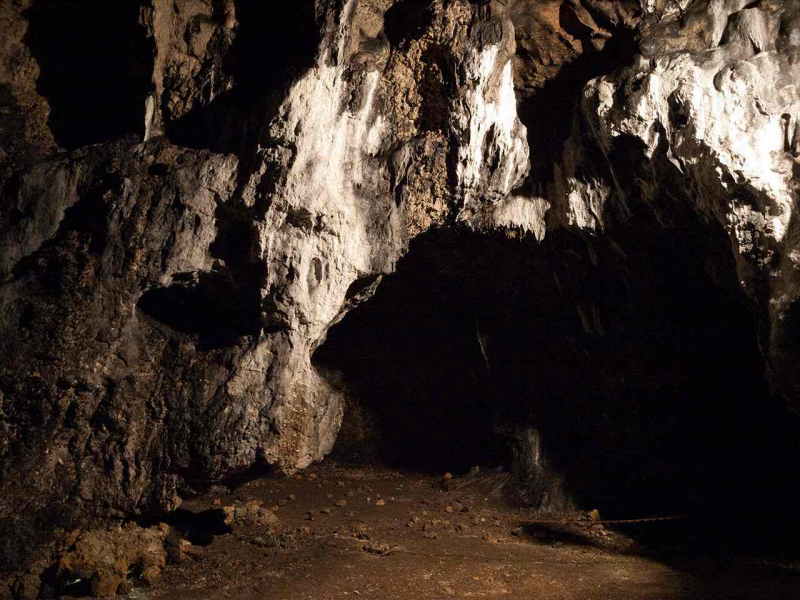
https://govisity.com/ -
Wierzchowska Górna Cave is located in the settlement of Wierzchowie, 5 kilometers southwest of Ojców, just outside the park's boundaries. Wierzchowska is the largest cave in the Kraków-Częstochowa highlands, measuring 950 meters in length. During post-World War II digs, artifacts from the late Stone Age and pottery from the middle Neolithic period were discovered.
This was one of the first caves in Europe to open to the public, covering over 1,000 meters of underground labyrinths. Tools and the skeleton of a cave bear have been discovered here, but the community of bats (mostly Horseshoe species) and the Cave Spiders, which are poisonous but not hazardous, are the main attractions today.
If you don't have a car, you can reach there from Kraków's center by taking a tram from Plac Inwalidów to 'Bronowice Male,' where you'll transfer to bus 210 and get off at 'Biay Kocio' (requested stop).
Length: 950 m
Address: Spacerowa, 32-089 Wierzchowie, Poland
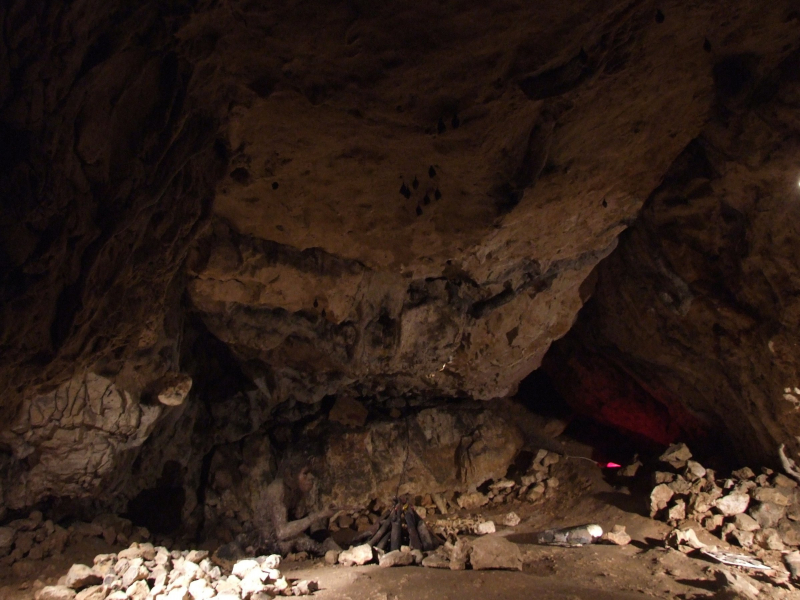
https://polish-jura.com/ 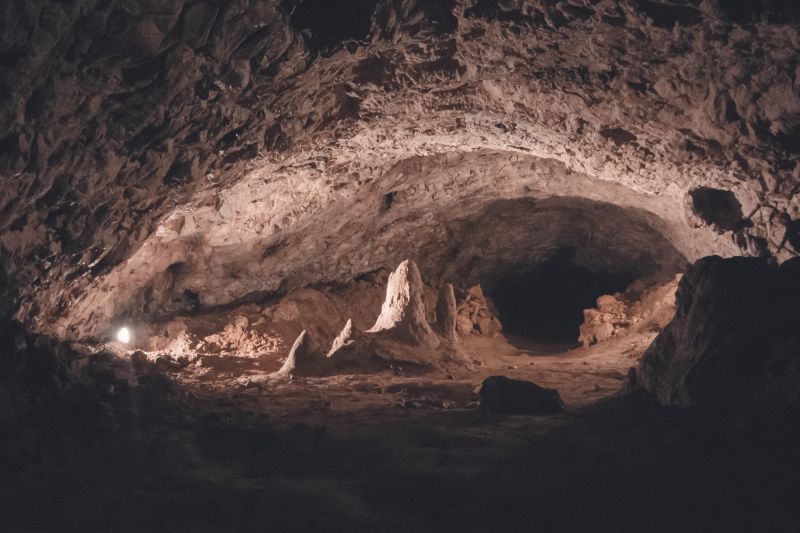
https://commons.wikimedia.org/











